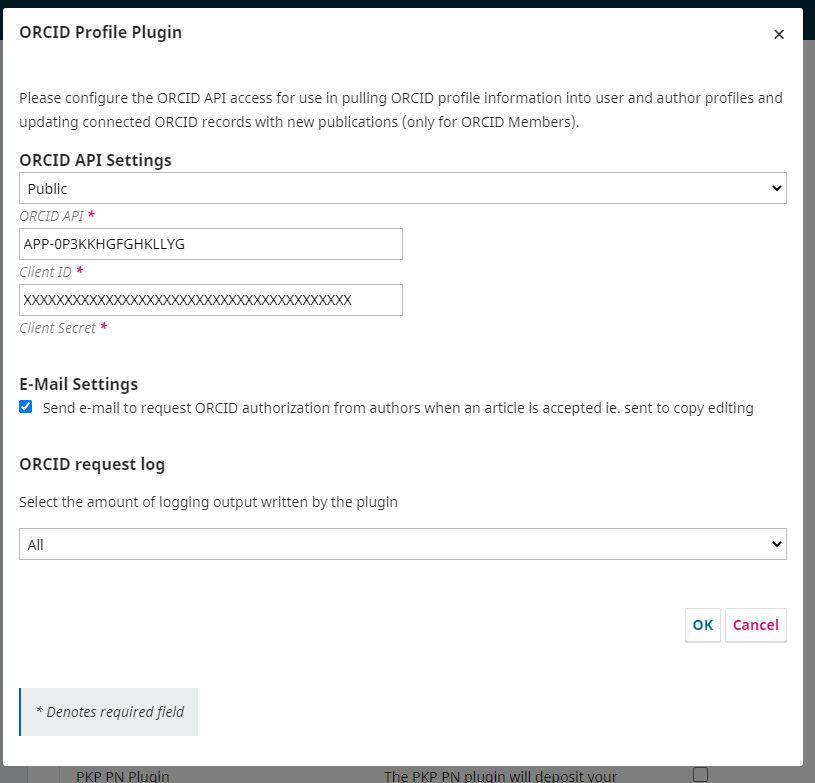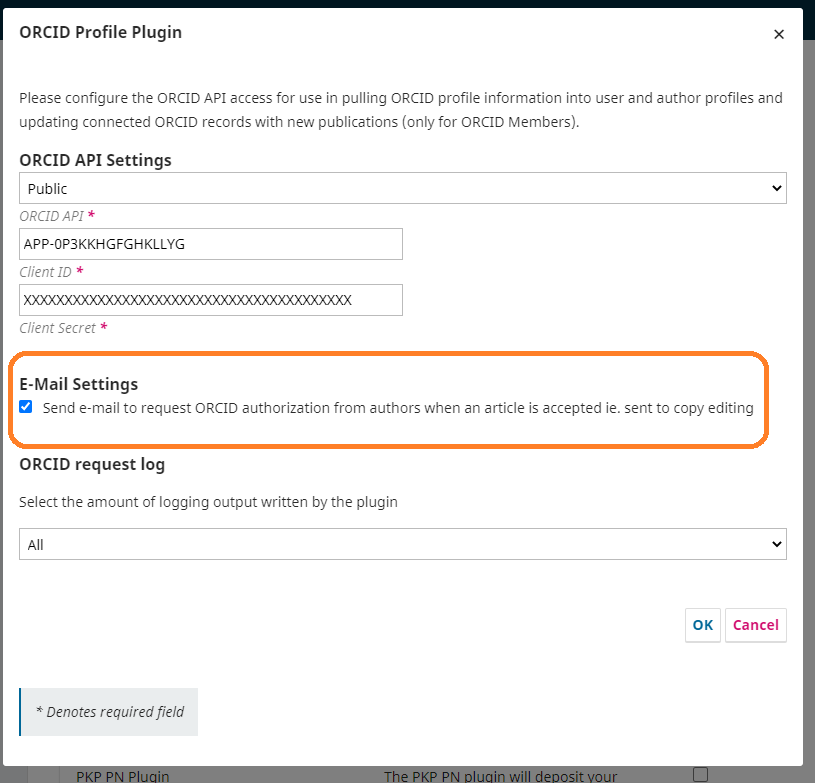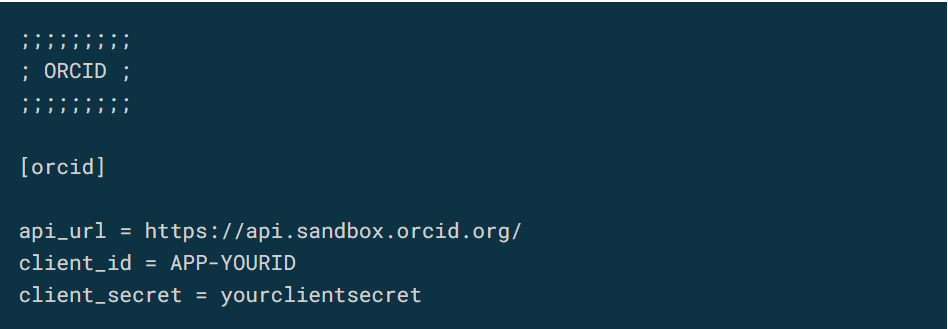
To use the plugin, you will first need to obtain either Public or Member ORCID API credentials (Client ID and Client Secret) and then configure the ORCID plugin in OJS/OPS with this information.
IMPORTANT: do not enable the plugin until you have the credentials and are ready to setup the plugin.
If you have previously collected ORCIDs manually prior to setting up the plugin, typos in the manually-entered ORCID field may cause errors. See the Troubleshooting section of this guide for more details.
See ORCID Integration Guide, and follow the instructions in: Registering Public API credentials.
Member API credentials are connected to an ORCID member organization. Your organization must be an ORCID member to request Member API credentials. If your journal is affiliated with an institution, contact the institution’s library to ask about ORCID membership and API credentials. You may also wish to check whether your organization belongs to a local consortium, as you may be able to receive help from the consortium. You can also contact ORCID directly at support@orcid.org.
To obtain your Member API credentials, see Registering a Member API Client.
Please note: When registering to receive Member API credentials, organizations are required to indicate the “Name of your client application”. When working with multiple journals as part of an OJS instance, the name used must be broad enough to serve as a source for all of the journals hosted on its instance(s), as the name is what will appear as the “source” of data when a work from OJS is written to an ORCID record (e.g. “ABC University journal hosting service”). However, if you plan to install only one journal in your domain and use ORCID for that journal, then the name of the client application can be indicated as the name of the journal.
When you register for ORCID API credentials, you will need to enter at least one Redirect URI, which is the journal location that your users will be sent to after authorizing OJS/OPS to connect to their ORCID record, The URI must begin with “https://” and include the link to the journal as part of the URI. For example:
https://example.comhttps://example.com/index.php/testJournalhttps://example.com/index.php/testJournal/indexThe host option allows any URI under that host to be used as a Redirect URI. In multiple journal instances, make sure you choose the base url of your domain and not individual journals to avoid redirect errors. For individual journals it is important to use the journal path without any trailing information, as per above.
Although there appears to be a limit of five redirects, you can add as many as you like to the “notes to ORCID” section.
If a URI needs to be updated, or new one(s) added:
After you have obtained your Client ID and Client Secret from ORCID, you can enable and configure the plugin in OJS/OPS.
There are three potential scenarios for configuring the plugin, based on your use case:
If you want to enable the ORCID plugin for a single journal (OJS) or preprint server (OPS):

Under “E-Mail Settings” you can tick the checkbox to “Send e-mail to request ORCID authorization from authors when an article is accepted.” Instructions for modifying the emails sent to authors and be found in the Plugin Functionality section.

Once you activate the plugin, you will no longer be able to use unauthenticated ORCID iDs. This ensures that the metadata sent to ORCID.org is correct and authenticated. If you have submissions in-progress which already have manually-entered ORCID iDs, those articles will be prevented from publishing until the iDs are removed.
In order to remove an ORCID iD:
![OJS ORCID plugin with checkbox checked to delete ORCID iD and access token.].(/assets/how_to_delete_unauthenticated_ORCID.PNG)
For multi-journal and multi-preprint server installations the plugin can be set site-wide in config.inc.php to enable the ORCID plugin for all journals. Note that site-wide settings through config.inc.php override any existing individual plugin settings. However, the plugin can be enabled/disabled on an individual basis for journals, and each journal can manage their own email settings as described above. Adding credentials in the config.inc.php hides the Client Secret from Journal/Server Managers, which may be preferred if you have institutional credentials for ORCID. Add the following section to your config.inc.php file:

Note that the api_url needs to end with a slash.